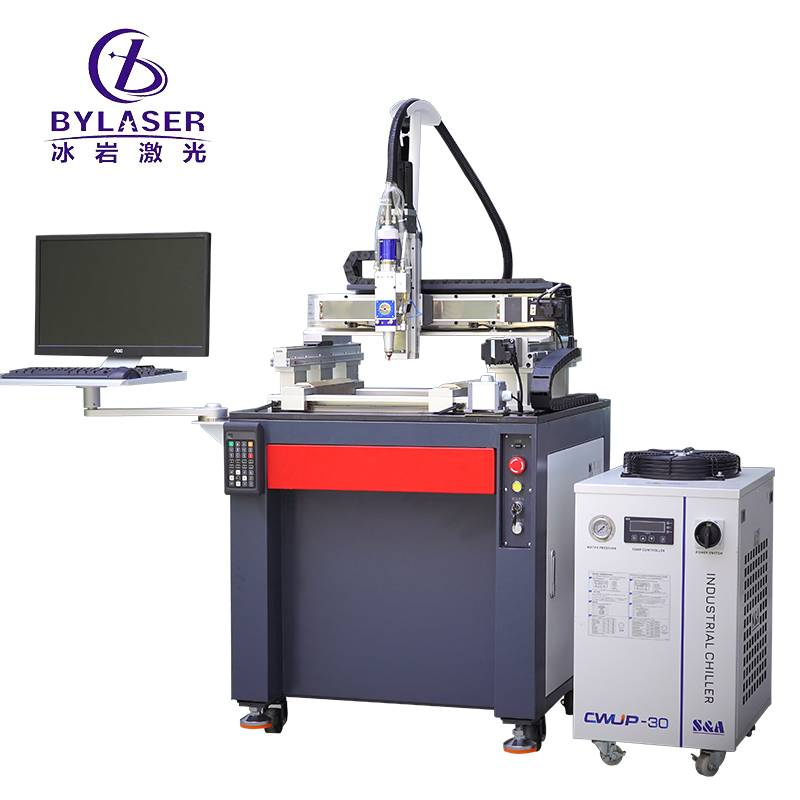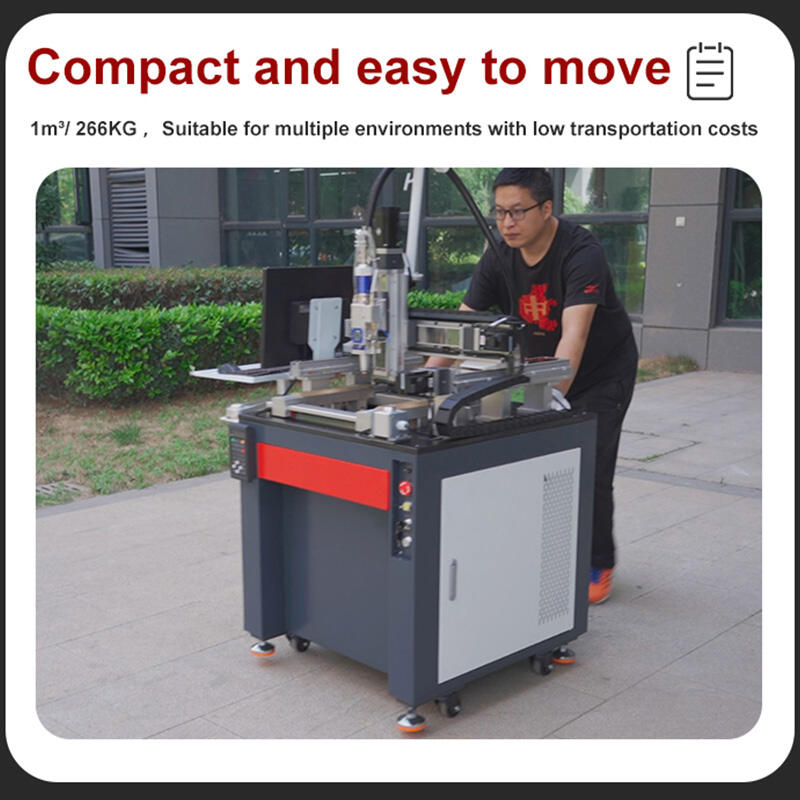 ×
×
Evoluzione della produzione industriale ha portato notevoli progressi nelle capacità di lavorazione dei metalli, con il macchina da taglio laser che si colloca al primo posto in questa rivoluzione tecnologica. Questi sistemi sofisticati hanno trasformato il modo in cui le industrie affrontano la lavorazione dei materiali, offrendo una precisione, velocità e versatilità senza precedenti. Mentre i produttori cercano soluzioni efficienti per le loro esigenze produttive, comprendere quali materiali funzionano meglio con questi sistemi avanzati diventa fondamentale per ottimizzare le operazioni e ottenere risultati superiori.
La tecnologia moderna delle macchine per il taglio laser ha rivoluzionato la lavorazione dei metalli introducendo capacità che in precedenza erano impossibili da ottenere con i metodi tradizionali di taglio. La precisione dei fasci laser, combinata a movimenti controllati da computer, garantisce un'accuratezza eccezionale, riducendo al minimo lo spreco di materiale e abbreviando i tempi di produzione. Questa tecnologia avanzata è diventata indispensabile in numerosi settori industriali, dall'industria automobilistica a quelle aerospaziali.
L'acciaio dolce e l'acciaio al carbonio sono tra i materiali più comunemente lavorati utilizzando una macchina per il taglio laser. Questi materiali presentano ottime caratteristiche per il taglio laser, principalmente grazie alla loro composizione uniforme e al comportamento prevedibile in condizioni di alta temperatura. Il processo di taglio laser produce bordi puliti e precisi con zone termiche minimamente interessate, rendendolo ideale sia per lamiere sottili che per lastre più spesse di questi materiali.
Durante la lavorazione dell'acciaio dolce, la macchina per il taglio laser può raggiungere velocità di taglio fino a 20 metri al minuto, a seconda dello spessore del materiale e della potenza del laser. La precisione e l'efficienza di questo processo lo rendono particolarmente vantaggioso per produzioni su larga scala in cui la costanza è fondamentale.
L'acciaio inossidabile presenta vantaggi unici quando lavorato con tecnologia al laser. Il fascio ad alta potenza di una macchina per il taglio laser può efficacemente penetrare diverse qualità di acciaio inossidabile mantenendo un'eccezionale qualità del bordo. Questa capacità è particolarmente importante in settori che richiedono componenti resistenti alla corrosione, come l'equipaggiamento per l'industria alimentare o i dispositivi medici.
La capacità di lavorare l'acciaio inossidabile con una minima distorsione termica rende le macchine per il taglio laser la scelta preferita per applicazioni che richiedono tolleranze strette e una qualità superiore della finitura. La tecnologia si distingue nel tagliare forme complesse e disegni intricati mantenendo l'integrità del materiale.
La lavorazione dell'alluminio mediante una macchina per il taglio laser richiede una competenza specifica a causa delle proprietà uniche del materiale. La natura altamente riflettente dell'alluminio richiede regolazioni accurate dei parametri e configurazioni laser specializzate per ottenere risultati ottimali. Le moderne macchine per il taglio laser dotate di tecnologia laser a fibra si distinguono nella lavorazione dell'alluminio, offrendo una qualità superiore dei bordi e velocità di taglio più elevate rispetto ai metodi tradizionali.
La capacità di lavorare efficacemente l'alluminio ha aperto nuove possibilità in settori come l'aerospaziale e la produzione automobilistica, dove la riduzione del peso e la precisione sono fattori critici. Macchine avanzate per il taglio laser possono gestire varie leghe di alluminio, dalle lamiere sottili utilizzate in elettronica alle piastre più spesse impiegate in applicazioni strutturali.
Il taglio del rame e ottone con una macchina a laser richiede una tecnologia sofisticata a causa dell'elevata conducibilità termica e delle proprietà riflettenti di questi materiali. I moderni sistemi a laser in fibra hanno superato le sfide tradizionali, permettendo un taglio efficiente di questi materiali con precisione notevole. La chiave è utilizzare la corretta combinazione di potenza del laser, velocità di taglio e gas ausiliario per ottenere risultati ottimali.
I settori che richiedono componenti complessi in rame o ottone beneficiano notevolmente della capacità della tecnologia di taglio laser di produrre forme complesse con spreco minimo di materiale. Questa capacità è particolarmente preziosa nella produzione di componenti elettrici e in applicazioni decorative dove l'aspetto estetico è cruciale.

La lavorazione del titanio e di altri metalli esotici rappresenta una delle applicazioni più avanzate della tecnologia delle macchine per il taglio laser. Questi materiali richiedono spesso parametri di lavorazione specifici e controlli ambientali per garantire risultati ottimali. La precisione del taglio laser rende possibile lavorare questi materiali preziosi con sprechi minimi, mantenendo rigorosi standard di qualità.
La lavorazione del titanio mediante macchine per il taglio laser è diventata sempre più importante nella produzione di impianti medici e nelle applicazioni aerospaziali. La capacità di questa tecnologia di creare tagli precisi e puliti senza contaminazione la rende indispensabile per queste applicazioni critiche.
Le moderne macchine per il taglio laser hanno dimostrato capacità notevoli nel lavorare materiali compositi e misti. Questa versatilità permette ai produttori di operare su materiali stratificati o su combinazioni di metalli diversi in un'unica operazione. Il controllo preciso offerto dalla tecnologia laser garantisce una separazione pulita degli strati senza delaminazione o danni ai materiali adiacenti.
La capacità di lavorare diversi tipi di materiali ha aperto nuove possibilità nel design dei prodotti e nell'efficienza produttiva. Gli ingegneri possono ora creare componenti complessi che incorporano materiali differenti mantenendo elevati standard di precisione e qualità.
Le moderne macchine per il taglio laser possono lavorare efficacemente metalli che vanno da sottili fogli a lastre spesse fino a 25 mm, a seconda del tipo di materiale e della potenza del laser. L'acciaio dolce può generalmente essere tagliato fino a 25 mm, l'acciaio inossidabile fino a 20 mm e l'alluminio fino a 15 mm con macchine industriali standard.
Diversi materiali richiedono diverse potenze laser e velocità di taglio per ottenere risultati ottimali. L'acciaio dolce generalmente permette velocità di taglio più elevate rispetto all'acciaio inossidabile o all'alluminio. Fattori come la riflettività del materiale, la conducibilità termica e lo spessore influenzano direttamente le velocità di lavorazione e i requisiti dei parametri.
Le macchine per il taglio laser producono tipicamente un'elevata qualità della finitura superficiale con formazione minima di bave. La qualità del bordo dipende da diversi fattori, tra cui il tipo di materiale, lo spessore e i parametri di taglio. La maggior parte dei materiali può raggiungere valori di rugosità superficiale di Ra 1,6 o migliori, rendendo in molti casi superflue ulteriori operazioni di finitura.
